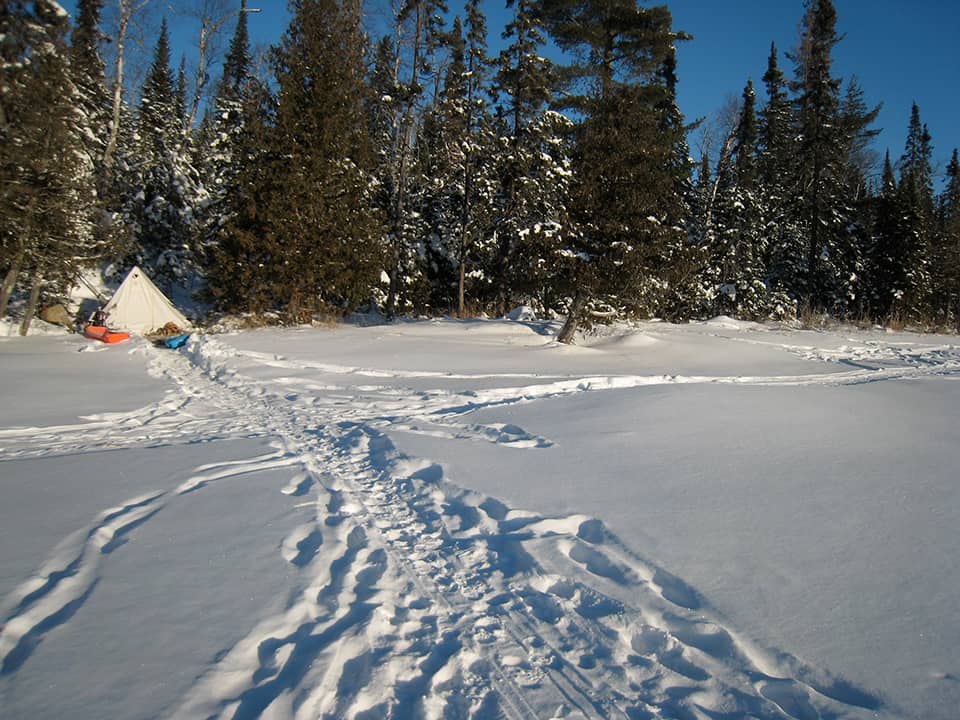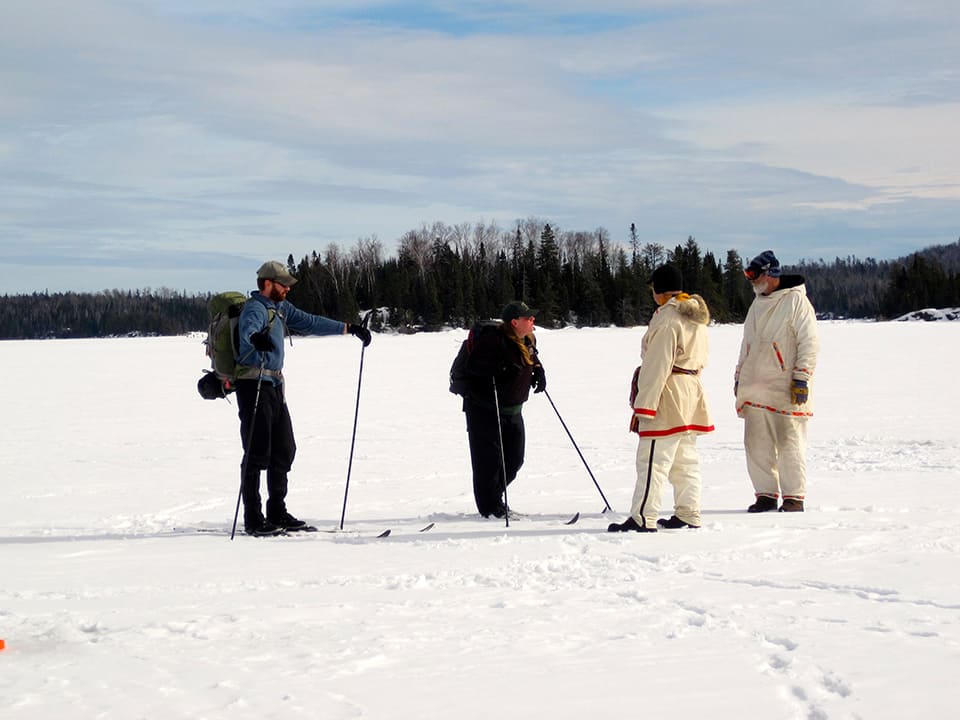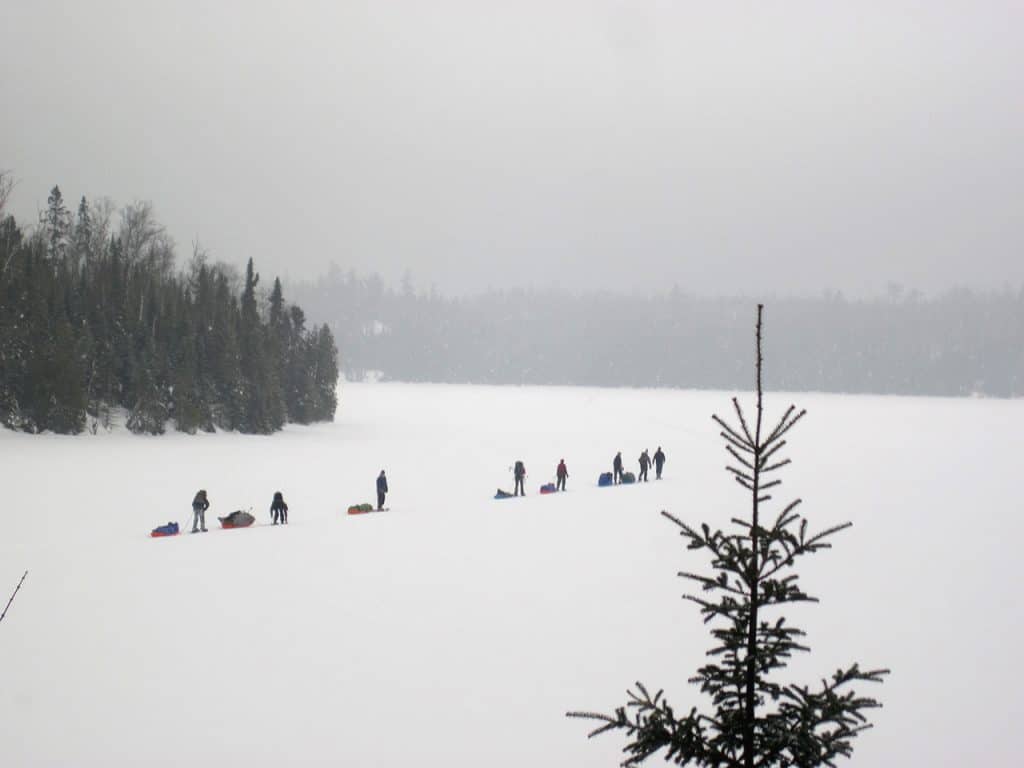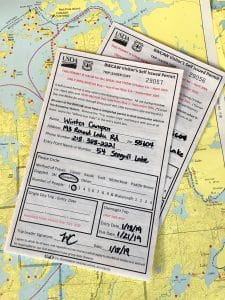Camping in Quetico-Superior country this winter? How to do it responsibly

By Ada Igoe, Contributor
Winter camping might be an acquired taste, but the hardy souls that head into the Boundary Waters Canoe Area Wilderness and Quetico Provincial Park to winter camp need to be just as conscious of wilderness rules and regulations as their summer counterparts.
Despite their small number, winter campers are some of the most destructive Boundary Waters visitors, said Cathy Quinn, a U.S. Forest Service wilderness ranger for more than 20 years in the Gunflint District of the Superior National Forest.
“It’s like the summer issues we see, but on steroids,” said Quinn of the problematic winter camping practices she and her fellow wilderness rangers run into when they patrol the BWCAW. But, she added, “when people do [winter camping] right, we have no idea that people have been there.”
Anecdotally, Quinn said she feels the number of winter campers have been slowly increasing in recent years and she’s noticed a few winter camping “hot spots” on the eastern side of the Boundary Waters where she works, especially on lakes such as Duncan, Daniels, Seagull, and Tuscarora. “It feels like it’s going up,” Quinn said of winter camping visitors. “And it’s encouraging to me as long as people are doing it right.”

Camp Carefully
In the summer months, visitors to the BWCAW must camp at a designated campsite with fire grate and a latrine. In the winter, the Forest Service recommends the exact opposite, which can confuse first-time winter visitors. Although winter campers aren’t expressly forbidden from using designated campsites, Quinn says winter campers should plan to spike out on the lake ice. By limiting campsites to summer use only, the campsites get a well-deserved rest and protects them from winter camper misuse.
“If you camp on a designated campsite, you must use the fire grate and latrine,” Quinn said. “And not everyone finds them [in the winter].”
If it’s green and growing . . . don’t cut it!
Winter campers have a penchant for cutting green vegetation, Quinn said. They frequently cut balsam boughs to line their tent floors–which is illegal–and can expand designated campsites as campers harvest the vegetation around the edges of a campsite. Another destructive behavior Quinn sees in the winter is that campers build large teepees and forts.
Fires
Fires are particularly important when you’re camping in freezing temps, but winter campers still need to keep their fires small, Quinn said.
“Big fires mean lots of firewood,” she said and winter campers don’t always venture far enough into the forest to gather their firewood. A common problem is winter campers cutting their firewood right off the shoreline. Often in the summer, Quinn and other wilderness rangers find tree trunk “cannons” along the shoreline, left behind when winter campers sawed off a dead tree at the snow level. Quinn recommends that winter campers use fire pans to contain their winter fires and eliminate burn scars on the forest floor.
Pack it in, pack it out
While snow helps protect the wilderness from degradation and erosion in the winter months, that snow also has a tendency to interfere with winter campers’ best “leave no trace” intentions. Winter campers need to keep track of their knives, saws, headlamps, and other commonly misplaced items during their trips so their personal effects don’t become springtime offerings from the “wilderness gods” to the next visitor.
“Snow eats things and re-gifts them,” Quinn said.
Be over-prepared
While adequate preparation is the secret ingredient to every successful wilderness camping trip, winter campers “really need to plan ahead from a safety perspective,” said Quinn.
“Know your conditions ahead of time: what lake conditions are, what the weather forecast is,” she said.
While people might be prepared for -20 below temperatures, they might not be prepared for a random rainfall in 34 degree weather that soaks themselves and all their gear, she said. “People underestimate what they need for clothing,” said Quinn. “You need a bunch of layers and a change or two.”
Most of all, winter campers should enjoy their unique freedom to explore corners of the wilderness that are inaccessible in any other season.
“I love that it’s free and there’s no quota,” Quinn said of winter camping in the Boundary Waters. “People have the freedom to go wherever they want. That’s a really cool thing about the winter.”
FOR MORE INFORMATION
BWCAW Permit Info on Recreation.gov
Quetico Provincial Park Permit Info on OntarioParks.com

Permit FAQ
Visitors to Boundary Waters always need a permit in their possession, but from October 1 – April 30, permits are free, self-issued, and there’s no quota system to control visitor traffic.
Where do you get these permits?
You can pick up a permit at any U.S. Forest Service office or grab one at the U.S. Forest Service bulletin board located at each BWCA entrypoint public access. Simply fill out the form and carry the top portion of the permit with you during your trip. The back portion of the permit is left in the kiosk box or at a U.S. Forest Service office.
What’s the difference between a day use and an overnight permit?
There isn’t one! Although it’s often referred to as a day-use permit, if you’re going on an overnight trip between October 1 and April 30, you fill out the same form. Just fill out the overnight trip box in the lower right-hand corner of the permit.
Is there a cost?
No, it’s free to camp in the Boundary Waters from October 1 – April 30 and there are no quotas for how many groups can use an entry point each day. However, campers must move camping spots every 14 days if they’re planning an extended winter visit.
Free, self-issuing . . . why should I bother?
BWCAW rules and regulations are printed on the back of permit portion that visitors travel with so winter campers always have a reminder of proper wilderness practices in hand. By filling out a permit, you help the Forest Service track visitor usage. This data influences future wilderness management plans. And you’ll be asked to show your permit if you run into a wilderness ranger during your trip.

https://queticosuperior.org/blog/wonder-winter-camping

